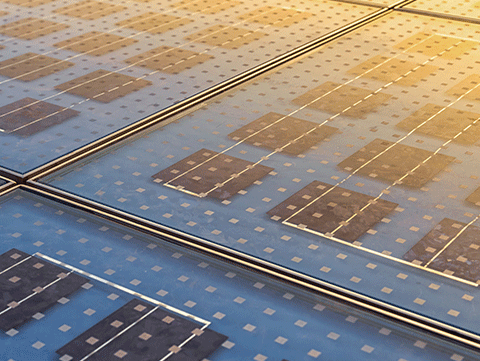
The increasing popularity of solar power in the UK is helping householders cut their electricity bills – but the solar installation could also pose a danger if the components do not meet the latest standards.
A typical installation consists of a photovoltaic (PV) array connected to a DC/AC inverter through a DC isolator. After conversion to AC, the electricity passes through an AC isolator and into the domestic distribution unit and meter.
The DC isolator is critical to the safety of the installation because switching a DC load safely can be tricky. It is relatively easy to switch an AC load because the load supply will always pass through zero twice in every cycle and any arcing between contacts when the switch is operated will be extinguished.
Switching a loaded DC circuit – such as that in the solar installation – is more difficult because you are always switching against the load, regardless of the supply from the PV array. There will be arcing between the contacts that will stop only when the gap between the contacts is large enough to prevent breakdown of the intervening air.
To disconnect a DC supply safely, the switching operation must be performed quickly and the switch must be designed to dissipate the arc energy released during the switching operation.
For this reason, a switch-disconnector should be used because it is designed to function as a safety isolation switch. It can make and break current and be used for on-load isolation.
However, the safe functioning of some isolators used in solar installations – particularly those based on AC isolator designs – is critically dependent on the speed at which they are operated. If they are operated too slowly, arcing can occur for 100ms or more, compromising contact resistance and reducing the life of the isolator.
To solve this problem, manufacturers have introduced switch-isolators with spring-loaded mechanisms that switch independently of the speed with which the operator turns the switch – perhaps in as little as a few milliseconds. Graham Viney, quality manager at IMO Precision Controls, said there is pressure in the market to make use of such devices mandatory.
BS 7671 says DC isolation of the PV array in a solar installation should be provided by a switch-disconnector that meets Part 3 of BS EN 60947, which covers switches, disconnectors, switch-disconnectors and fuse-combination units. However, recent changes to Part 1 of BS EN 60947, which covers operator-independent operation and the ability to turn off and padlock an isolator with fused contacts, mean that it is important to for users to do their homework before choosing a switch-isolator. Many such products do not comply with the latest version of the standards.
“Make sure the products have third party approval to the latest standards,” said Viney. “Look for reputable companies, but do your homework too.” Be wary of products that are suspiciously cheap – “due diligence has a cost,” he said – and check out the credentials of manufacturers or products using online directories such as those of TüV in Germany or UL in the US.
2013-2025 © Doesitcomply UK. ALL Rights Reserved. Privacy Policy | Terms of Service